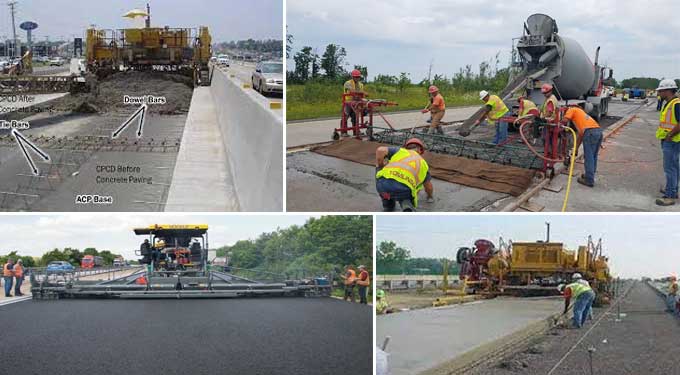
Types of Methods to patch up potholes in Bituminous or Asphalt Roads

What is the meaning of Patching in the process of construction?
Patching is the process of repairing damaged or excavated areas of asphalt pavement. To stop further degradation and expensive pavement repairs, potholes and other pavement damage should be fixed as soon as feasible. If a repair is not applied promptly, water may seep into the sub grade and lead to more serious pavement problems.
A full-depth or deep patch is a permanent repair; in contrast, a thin surface patch or a "throw and go" pothole repair is typically only temporary. There are several choices for repairing, including hot mix asphalt, asphalt emulsion mixes, stockpile patching mixes, and bespoke patching mixes with special combinations of aggregate and modified binders.
Full-depth patching involves the removal of the whole pavement surface layer, regardless of thickness, over the repairing region. Deep patching is the removal of four inches or more of the pavement surface course. While full-depth patching may be used on both concrete and asphalt pavements, deep patching is only appropriate for asphalt pavements.
Explain a few methods to patch potholes
The following works are included in the bituminous road repair:-
1. Degraded pavement course material should be removed until the root cause of the breakdown can be identified.
2. In order to solidify the vertical faces, the excavated sides must be trimmed.
3. Material replacement with the required standard for the previously designated pavement layer.
4. Before bituminous materials are placed in an excavation, a tack coat is applied to the side and base of the excavation.
5. To ensure that all surfaces of the patches were smooth, continuous, and level with the adjacent road, all patches were compacted and finished before they were applied.
Some specifications of the material repairs for potholes requirements
1. The same type of materials that were used in the initial construction must be utilised to repair any potholes and spots in bituminous surfaces and underneath layers.
2. Mixes that are superior to those on the current surface can be applied.
3. Using modified bitumen mixes or emulsified bitumen that is compatible with the existing layer is also typical.
4. Patching materials must be at least as good as, if not better than, the same kind and construction quality as the material being patched.
5. Patching materials must be at least as good as, if not better than, the same kind and construction quality as the material being patched.
6. There should be no patching of asphaltic materials with non-bituminous materials.
What are the Preparations required for potholes requirements?
1. Each pothole and patch repair location must be thoroughly examined, and any loose material must be removed.
2. The region should be cut or trimmed with jackhammers or hand tools so that all of the defective material that caused the breakdown is removed and the area is in a regular form.
3. The area of the excavation trench must be cut vertically.
4. To eliminate all dust and lose particles, the area must be thoroughly cleaned using compressed air.
5. The layers beneath the bituminous construction must be rebuilt with material that fulfills the same specifications as the original construction, including compaction requirements.
6. The section for bituminous construction will be tacked or primed with cutback or emulsion depending on whether the bottom area is bituminous or granular.
7. The sidewalls must be painted with hot tacking coat material.
How to place the mixture properly?
1. For bituminous patching, either a cold or a hot mixture must be used.
2. A mixing plant with sufficient capacity must be used for the mixing.
3. In order to achieve the desired compaction, the bituminous mixture shall be laid out in layers no thicker than 100 mm. It shall be compacted in layers with a hand roller, plate compactor, or rammer.
4. Following compaction, the surface should be level with the surrounding surface by slightly laying the mix proud of the surface.
5. Band shovels should be used for spreading and leveling, and the patch area has long straight wooden edges.
6. When compacting, a 3 m straight edge must be used to monitor the surface level.
To learn more, watch the following video tutorial.
Video Source: construct SKILLS
What are the merits of Repairing Potholes and Patching Bituminous Roads?
For bituminous roads to last long, they must be properly maintained. Repairing problem spots on the pavement as soon as possible can save money by delaying or preventing more costly repairs.
1. The result is that the material does not degrade completely.
2. Money is saved.
3. Tourism is promoted.
4. There is a reduction in accidents.
5. There is a reduction in congestion.

Image Courtesy: dreamstime.com

